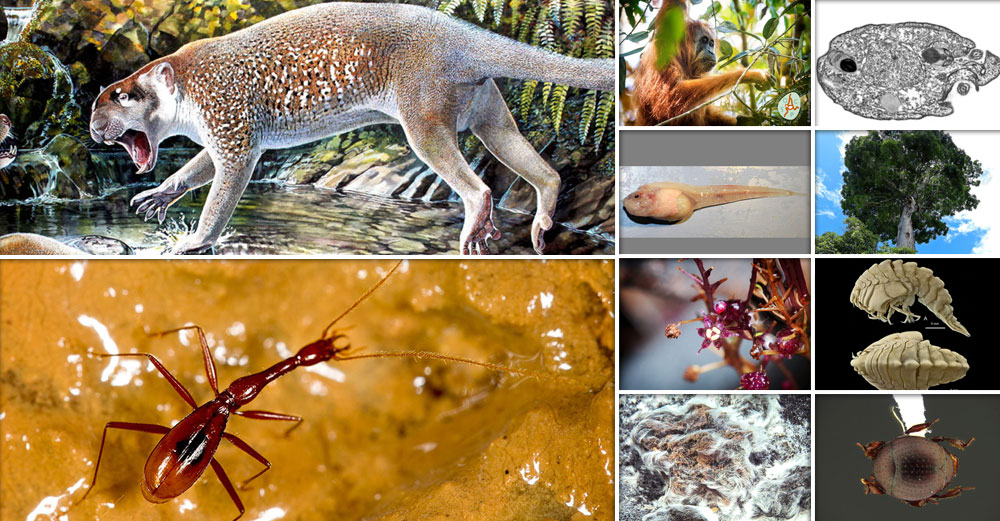From the tiniest of insects to the king of the jungle and everything in between, our planet is rife with tons of animals, plants, and microbes. Whether it’s the rainforest, the ocean, or the mountains, each ecosystem has its own unique inhabitants that coexist and try to adapt to their changing environments over time. While man-made and planet-based changes sometimes cause species to die-off, thankfully, new species continue to be discovered, and SUNY’s College of Environmental Science and Forestry (ESF) has a hand in these awesome discoveries!
Now in its tenth year, SUNY ESF’s International Institute for Species Exploration (IISE) publishes a list of the top 10 new species annually. Like in past years, this year’s list features some interesting discoveries, such as volcanic bacterium, a beetle skilled in camouflage, and an Atlantic forest tree.
With each list, the school hopes to educate the public on the value of species exploration and biodiversity.
“We name about 18,000 per year but we think at least 20,000 per year are going extinct. … So many of these species – if we don’t find them, name them and describe them now – will be lost forever,” says President Quentin Wheeler. “And yet they can teach us so much about the intricacies of ecosystems and the details of evolutionary history. Each of them has found a way to survive against the odds of changing competition, climate and environmental conditions. So each can teach us something really worth knowing as we face an uncertain environmental future ourselves.”
That being said, let’s get to this year’s list of discoveries, as provided by SUNY ESF And their researchers.
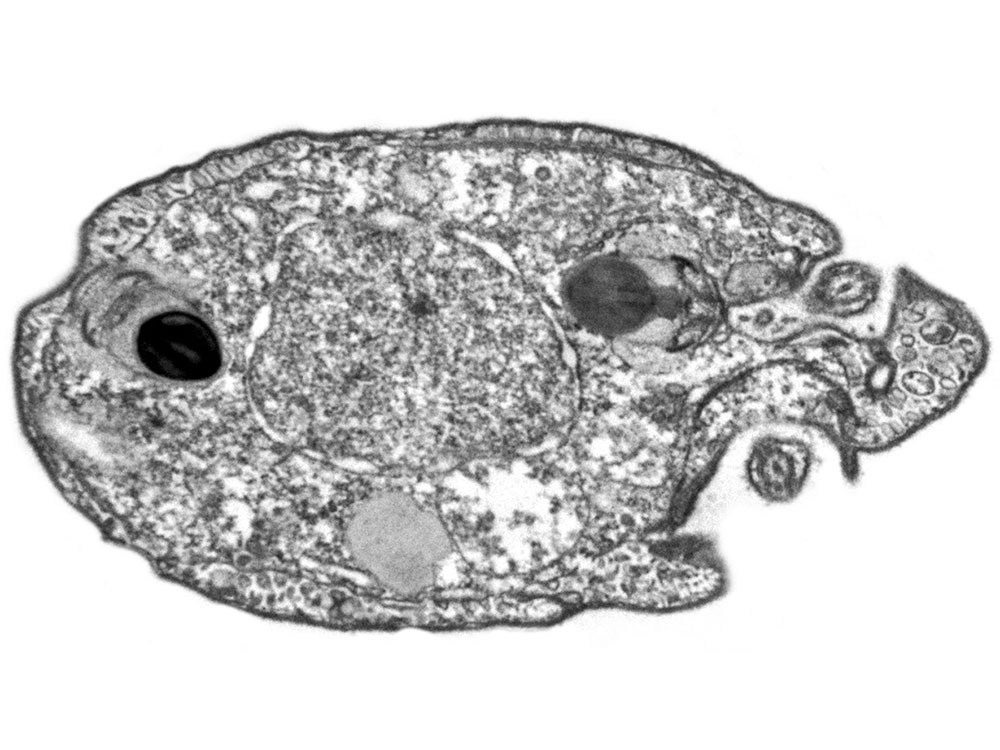 Protist: Aquarium to enigma
Protist: Aquarium to enigma
Ancoracysta twista
Location: Unknown
Discovered in an aquarium in San Diego, California, USA, this new single-celled protist has challenged scientists to determine its nearest relatives. It does not fit neatly within any known group and appears to be a previously undiscovered, early lineage of Eukaryota with a uniquely rich mitochondrial genome. Eukaryotes are organisms with cells in which genetic material is organized in a membrane-bound nucleus. Prokaryotes, like bacteria and archaea, lack such an organized nucleus. Eukaryotes include single-celled protists as well as multi-celled organisms we commonly think of as animals, plants and fungi.
Ancoracysta twista is a predatory flagellate that uses its whip-like flagella to propel itself and unusual harpoon-like organelles, called ancoracysts, to immobilize other protists on which it feeds. The geographic origin of the species in the wild is not known. It was found in a tropical aquarium at the Scripps Institution of Oceanography on a brain coral. The unusually large number of genes in its mitochondrial genome opens a window into the early evolution of eukaryotic organisms.
 Atlantic forest tree: Mighty in size, small in number
Atlantic forest tree: Mighty in size, small in number
Dinizia jueirana-facao
Location: Brazil
The legume genus Dinizia was known, until now, from a single Amazonian tree species, D. excelsa, discovered nearly 100 years ago. Dinizia jueirana-facao, up to 130 feet (40 m) in height, emerges above the canopy of the semi-deciduous, riparian, pristine Atlantic forest where it is found. This massive tree, weighing an estimated 62 tons (56,000 kg), is smaller than its Amazonian sister-species and lacks its buttresses, but is similarly impressive. D. jueirana-facao is known only from within and just beyond the boundaries of the Reserva Natural Vale in northern Espirito Santo, Brazil.
While large in dimension, the tree is limited in numbers – it is known from only 25 individuals, about half of which are in the protected area, making it critically endangered. The woody fruits are impressive in size, too, reaching about 18 inches (0.5 m) in length. More than 2,000 species of vertebrate animals live in the Atlantic forest, including almost 200 endemic species of birds. This forest is home to more than half of the threatened animal species in Brazil, but its range has been severely diminished and fragmented, with perhaps 15 percent of its once 330 million acres (more than 1.3 million square kilometers) remaining.
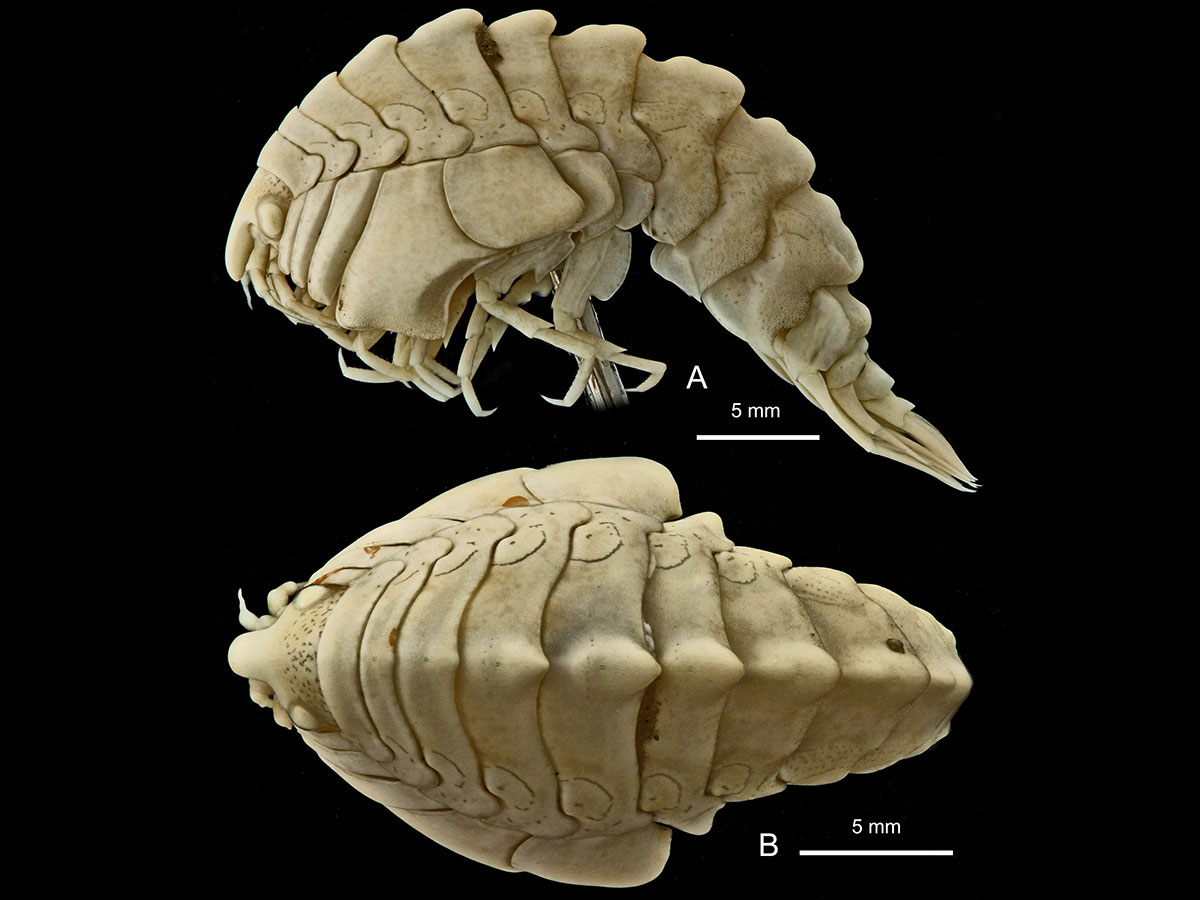 Amphipod: A name that rings a bell
Amphipod: A name that rings a bell
Epimeria quasimodo
Location: Antarctic Ocean
Here’s a new species whose name might ring a bell. This amphipod, about 2 inches (50mm) in length, Epimeria quasimodo, is named for Victor Hugo’s character, Quasimodo the hunchback, in reference to its somewhat humped back. It is one of 26 new species of amphipods of the genus Epimeria from the Southern Ocean with incredible spines and vivid colors. The number of species, and their extraordinary morphological structures and colors, makes the genus Epimeria an icon of the Southern Ocean that includes both free-swimming predators and sessile filter feeders.
The genus is abundant in the glacial waters circulating south of the Polar Front and their crested adornments are reminiscent of mythological dragons. When a treatment of the genus was published in 2007, many researchers assumed that the species were rather completely known. Using a combination of morphology and DNA evidence, however, a Belgian pair of investigators have demonstrated in their comprehensive monograph just how little we yet know of these spectacular invertebrates.
 Baffling Beetle: Camouflaged hitchhiker
Baffling Beetle: Camouflaged hitchhiker
Nymphister kronaueri
Location: Costa Rica
Nymphister kronaueri is a tiny beetle that lives among ants. At about 1.5 mm in length, 16 of them could line up head-to-tail in the space of an inch (2.5 cm). But their story gets much better. They live exclusively among one species of army ant, Eciton mexicanum. The host ants, as with other army ants, do not construct permanent nests but are nomadic. In the case of E. mexicanum, they spend two to three weeks on the move, making raids each day to capture thousands of prey items, then spend two to three weeks in one location. While the beetle can move about and feed while the host colony is stationary, it must make the trip with the ants when they are on the move to a new location.
The beetle’s body is the precise size, shape and color of the abdomen of a worker ant. The beetle uses its mouthparts to grab the skinny portion of the host abdomen and hang on, letting the ant do the walking. At a glance, an ant with the beetle onboard appears to have two abdomens but the upper one is a beetle. Like other myrmecophiles (literally, ant lovers), these beetles must use chemical signals or other adaptations to avoid becoming prey themselves. Exactly how that works in the case of N. kronaueri is yet to be determined.
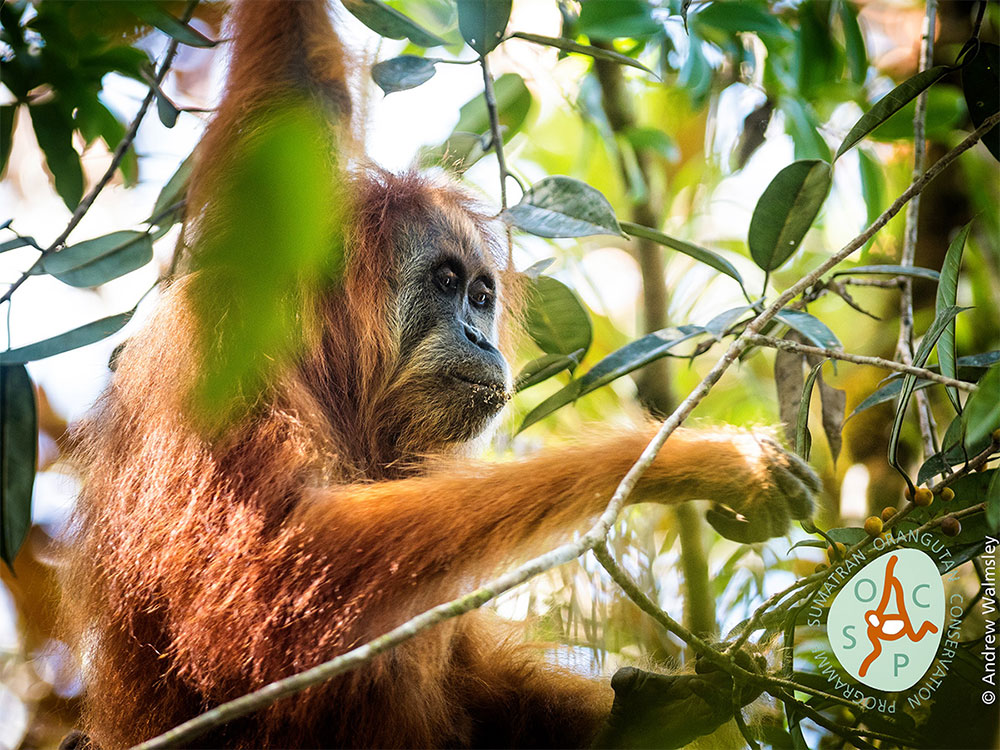 Tapanuli Orangutan: Endangered great ape
Tapanuli Orangutan: Endangered great ape
Pongo tapanuliensis
Location: Sumatra, Indonesia
Until now, only half a dozen non-human great apes have been recognized. The eastern and western gorillas, chimpanzees and bonobos are more closely related to humans than the orangutans which are the only great apes in Asia. In 2001, the orangutans of Sumatra and Borneo were recognized as distinct species, Pongo abelii and P. pygmaeus. An international team of researchers, examining morphometric, behavioral, and genomic evidence, have concluded that an isolated population at the southern range limit of Sumatran orangutans, in Batang Toru, is distinct from both northern Sumatran and Bornean species. Genomic evidence suggests that while the northern Sumatra and Borneo species separated about 674 thousand years ago, this southern Sumatra species diverged much earlier, about 3.38 million years ago.
As soon as the significance of this isolated population was determined, it revealed the most imperiled great ape in the world. Only an estimated 800 individuals exist in fragmented habitat spread over about 250,000 acres (about 1,000 square kilometers) on medium elevation hills and submontane forests from about 1,000 to 4,000 feet (300 to 1,300 m) above sea level, with densest populations in primary forest. Size is similar to other orangutans, with females under 4 feet (1.21 m) in height and males under 5 feet (1.53 m).
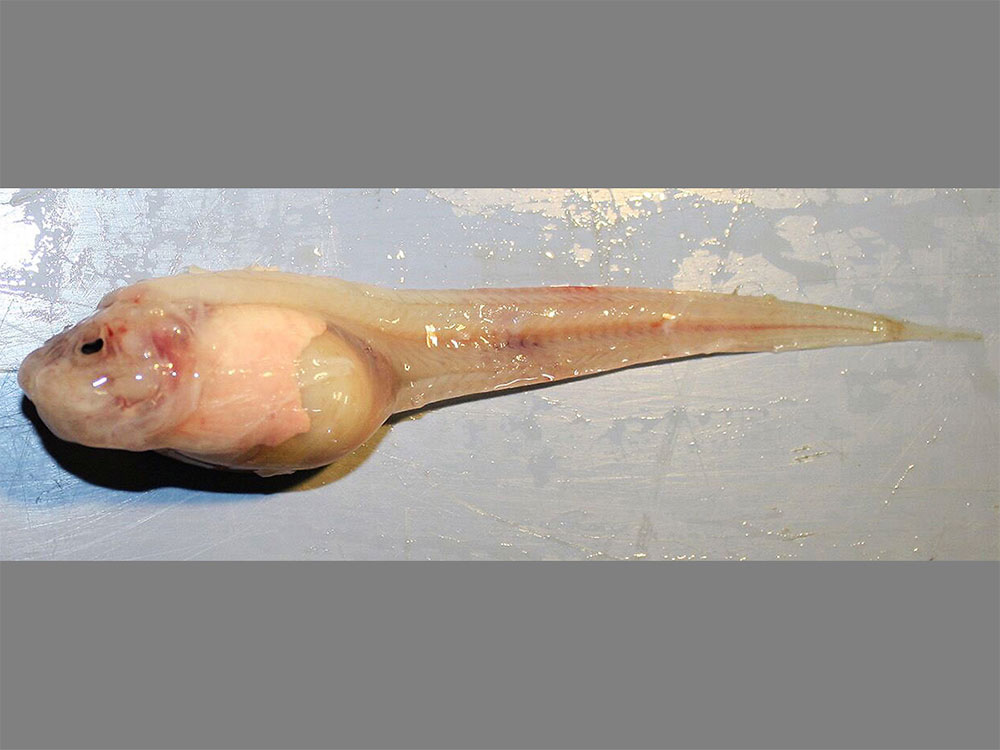 Swire’s Snailfish: Deepest fish in the sea
Swire’s Snailfish: Deepest fish in the sea
Pseudoliparis swirei
Location: Western Pacific Ocean
In the dark abyss of the Mariana Trench in the western Pacific lies the deepest spot in the world’s oceans and the deepest-dwelling fish ever discovered with verified depth. Large numbers of the new species were attracted to traps baited with mackerel. Pseudoliparis swirei is a small, tadpole-like fish measuring a little over four inches in length (112 mm) yet appears to be the top predator in its benthic community at the bottom of this particularly deep sea. It was captured at depths between 22,000 and 26,000 feet (6,898 and 7,966 m).
A fish was recorded on camera at an even greater depth, at nearly 27,000 feet (8,143 m) but it was not recovered and could not be confirmed to be the same species. P. swirei belongs to the snailfish family, Liparidae. Among the family’s more than 400 named species are fish found at all depths, from intertidal pools to the deepest reaches. It is believed that about 27,000 feet (8,200 m) is a physiological limit below which nearly all fishes cannot survive.
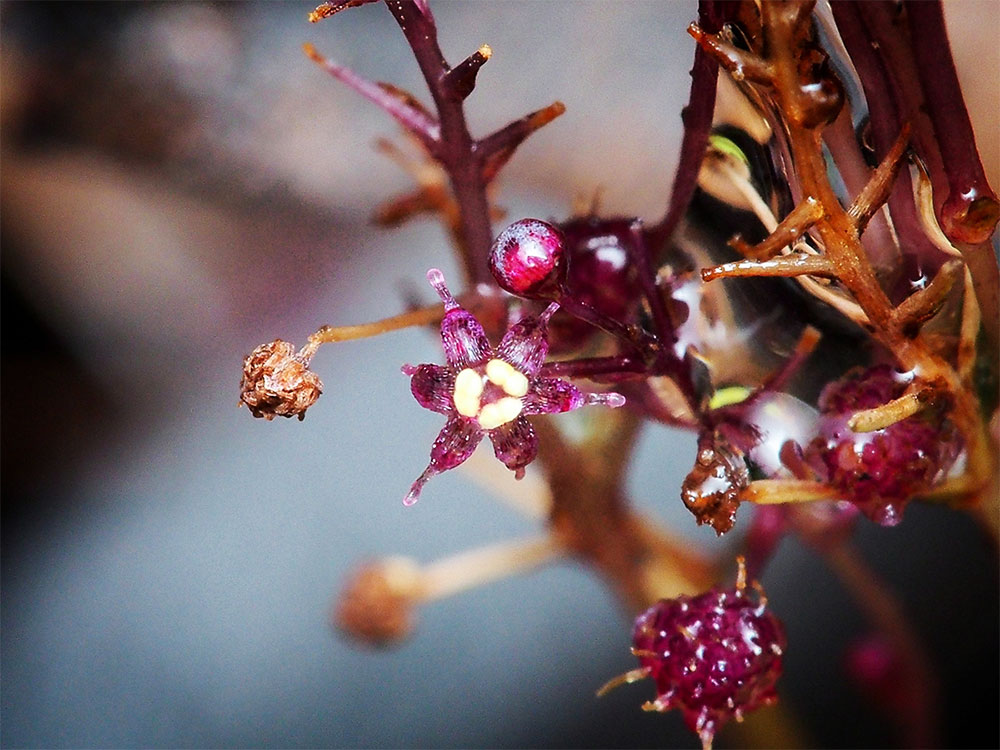 Heterotrophic Flower: Magnificent moocher
Heterotrophic Flower: Magnificent moocher
Sciaphila sugimotoi
Location:Ishigaki Island, Japan
Most plants are autotrophic, capturing solar energy to feed themselves by means of photosynthesis. A few, like the newly discovered S. sugimotoi, are heterotrophic, deriving their sustenance from other organisms. In this case, the plant is symbiotic with a fungus from which it derives nutrition without harm to the partner. In fact, the plant family Triuridaceae to which it belongs consists entirely of such mycoheterotrophs (fungus symbionts). The discovery of any new species of plant in Japan is newsworthy as the flora is well-documented, so such a beautiful new flower is an exciting addition.
The delicate S. sugimotoi, just under 4 inches in height (10 cm), appears during short flowering times in September and October, producing small blossoms. The species is considered critically endangered as it has been found in only two locations on the island in humid evergreen broadleaf forest, represented by perhaps 50 plants. As with other fungal symbionts, the species depends on a stable ecosystem for survival.
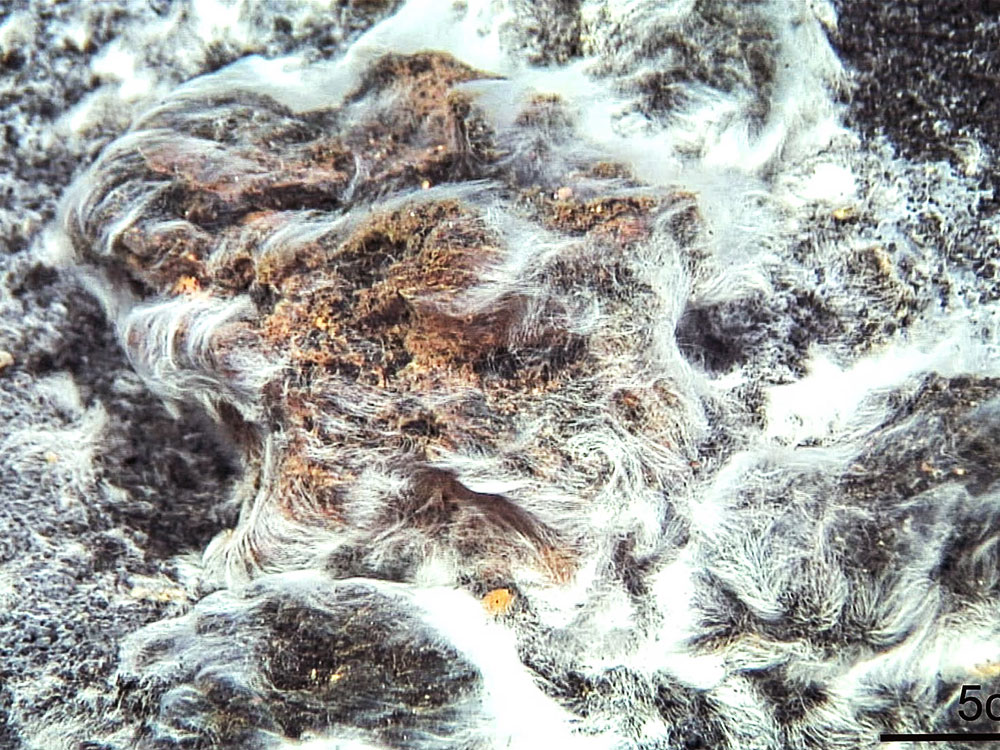 Volcanic Bacterium: Erupting onto the scene
Volcanic Bacterium: Erupting onto the scene
Thiolavaveneris
Location:Canary Islands
When the submarine volcano Tagoro erupted off the coast of El Hierro in the Canary Islands in 2011, it abruptly increased water temperature, decreased oxygen and released massive quantities of carbon dioxide and hydrogen sulfide, wiping out much of the existing marine ecosystem. Three years later, scientists found the first colonizers of this newly deposited area – a new species of proteobacteria producing long, hair-like structures composed of bacterial cells within a sheath.
The bacteria formed a massive white mat, extending for nearly half an acre (about 2,000 square meters) around the summit of the newly formed Tagoro volcanic cone at depths of about 430 feet (129-132 m). Scientists reporting the new species concluded that the unique metabolic characteristics of the bacteria allow them to colonize this newly formed seabed, paving the way for development of early-stage ecosystems. They dubbed the filamentous mat of bacteria “Venus’ hair.”
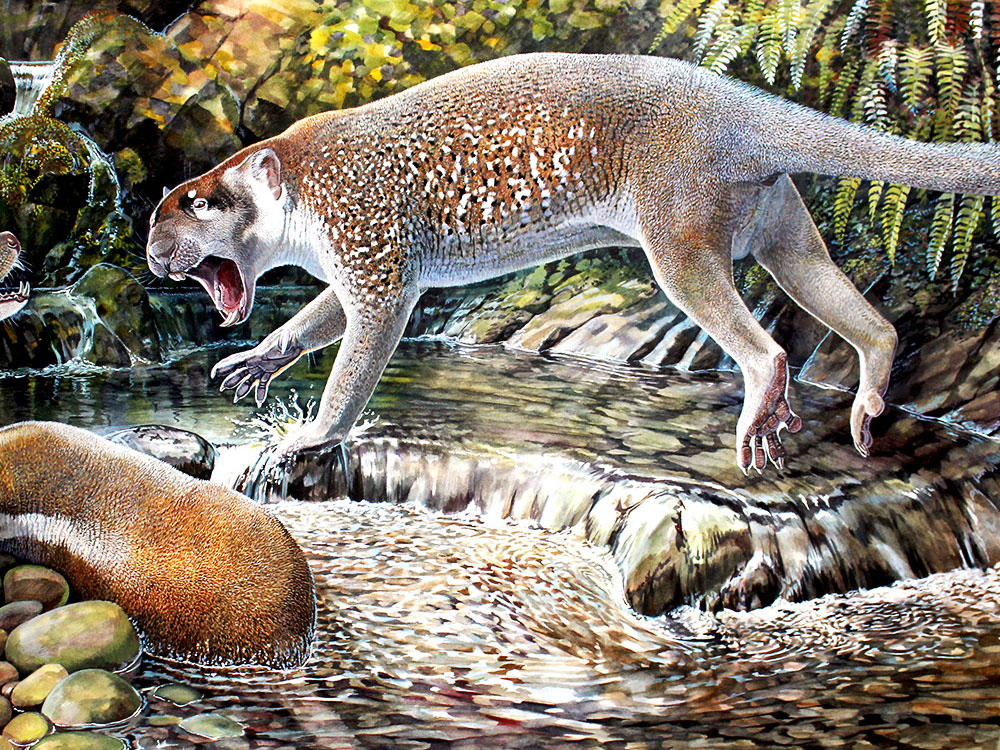 Marsupial Lion: Ferocious fossil
Marsupial Lion: Ferocious fossil
Wakaleo schouteni
Location: Australia
In the late Oligocene, which ended about 23 million years ago as the Miocene arrived, a marsupial lion, Wakaleo schouteni, roamed Australia’s open forest habitat in northwestern Queensland, stalking its prey. Scientists from the University of New South Wales recovered fossils in the Riversleigh World Heritage Area in Queensland that proved to be a previously unknown fossil marsupial lion. Weighing in at about 50 pounds, more or less the size of a Siberian husky dog, this predator spent part of its time in trees.
Its teeth suggest that it was not completely reliant on meat but was, rather, an omnivore. It is part of a lineage (the genus Wakaleo) that followed Cope’s rule during the Miocene, increasing in size through time, possibly in response to larger prey that, in turn, evolved as the flora changed as the continent became drier and cooler. Based on their discovery, researchers believe two species of marsupial lion were present in the late Oligocene 25 million years ago. The other, Wakaleo pitikantensis, was slightly smaller and was identified from teeth and limb bones discovered near Lake Pitikanta in South Australia in 1961.
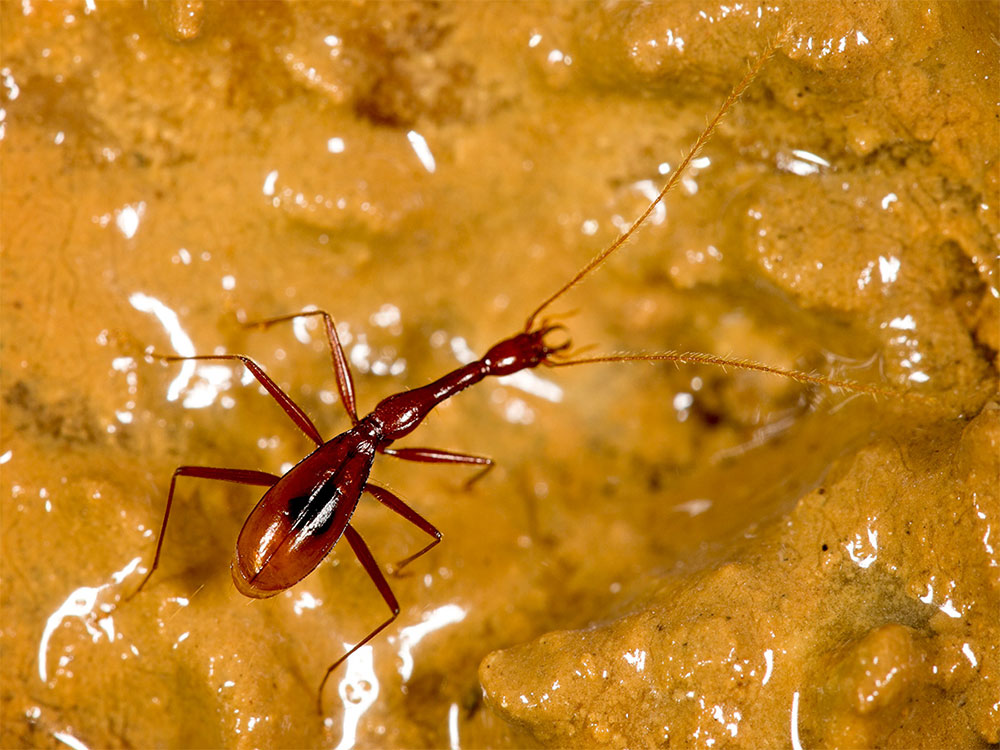 Cave Beetle: Imprints of darkness
Cave Beetle: Imprints of darkness
Xuedytes bellus
Location: China
Beetles that become adapted to life in the permanent darkness of caves often resemble one another in a whole suite of characteristics including a compact body, greatly elongated, spider-like appendages, and loss of flight wings, eyes and pigmentation. Such troglobitic beetles are a prime example of convergent evolution, that is, unrelated species evolving similar attributes as adaptions to similar selection forces. A new species of troglobitic ground beetle from China, less than half an inch in length (about 9 mm), is striking in the dramatic elongation of its head and prothorax, the body segment immediately behind the head to which the first pair of legs attach.
Xuedytes bellus was discovered in a cave in Du’an, Guangxi Province, China. Like much of southern China, this is in a vast karst landscape riddled with caves and home to the greatest diversity of cavernicolous trechine ground beetles (family Carabidae) in the world. To date, more than 130 species, representing nearly 50 genera, have been described from China. This new one is a spectacular addition to the fauna.
You can learn all about SUNY ESF’s Top 10 Species efforts at www.esf.edu/top10.


